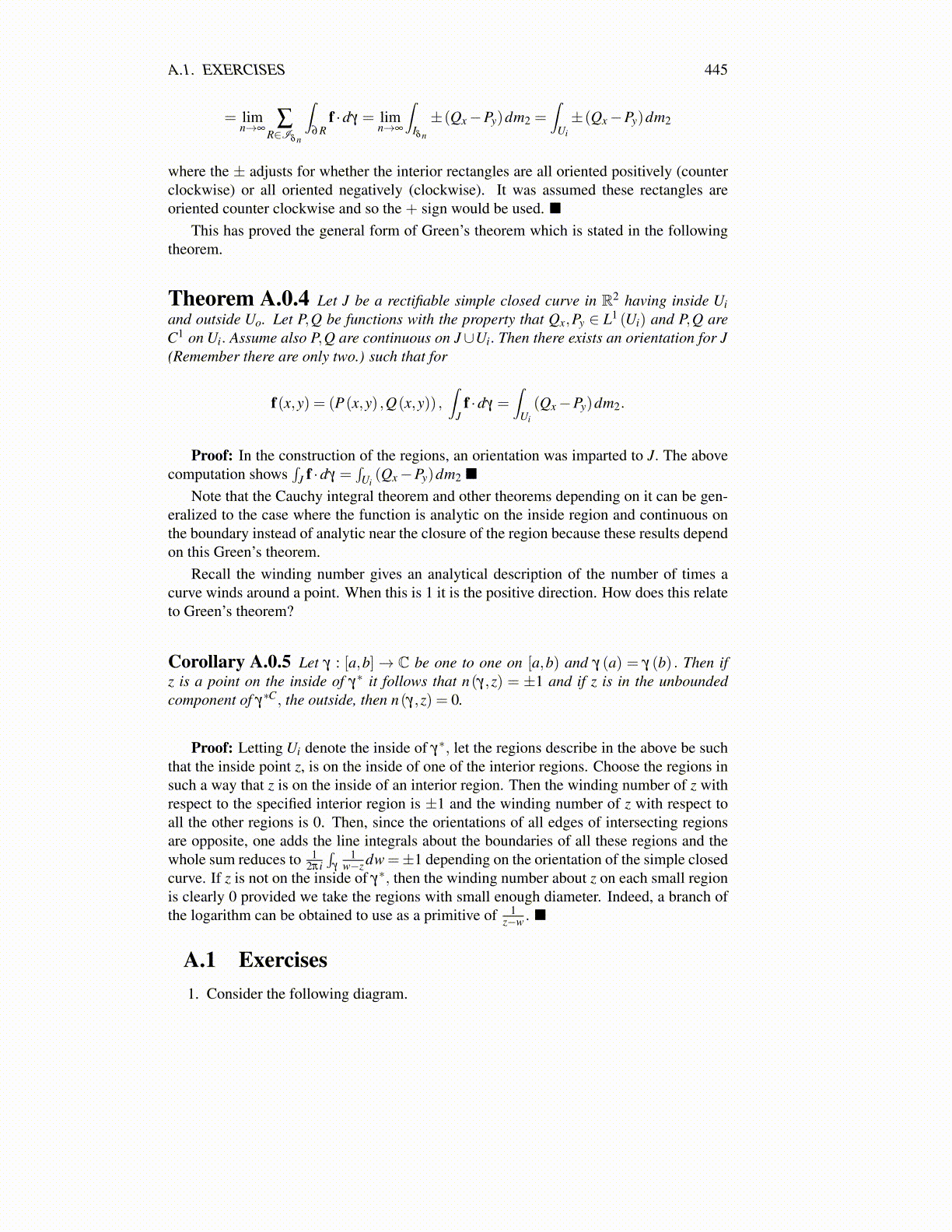
A.1. EXERCISES 445
= limn→∞
∑R∈Iδn
∫∂R
f ·dγ = limn→∞
∫Iδn
±(Qx−Py)dm2 =∫
Ui
±(Qx−Py)dm2
where the ± adjusts for whether the interior rectangles are all oriented positively (counterclockwise) or all oriented negatively (clockwise). It was assumed these rectangles areoriented counter clockwise and so the + sign would be used. ■
This has proved the general form of Green’s theorem which is stated in the followingtheorem.
Theorem A.0.4 Let J be a rectifiable simple closed curve in R2 having inside Uiand outside Uo. Let P,Q be functions with the property that Qx,Py ∈ L1 (Ui) and P,Q areC1 on Ui. Assume also P,Q are continuous on J∪Ui. Then there exists an orientation for J(Remember there are only two.) such that for
f(x,y) = (P(x,y) ,Q(x,y)) ,∫
Jf ·dγ =
∫Ui
(Qx−Py)dm2.
Proof: In the construction of the regions, an orientation was imparted to J. The abovecomputation shows
∫J f ·dγ =
∫Ui(Qx−Py)dm2 ■
Note that the Cauchy integral theorem and other theorems depending on it can be gen-eralized to the case where the function is analytic on the inside region and continuous onthe boundary instead of analytic near the closure of the region because these results dependon this Green’s theorem.
Recall the winding number gives an analytical description of the number of times acurve winds around a point. When this is 1 it is the positive direction. How does this relateto Green’s theorem?
Corollary A.0.5 Let γ : [a,b]→ C be one to one on [a,b) and γ (a) = γ (b) . Then ifz is a point on the inside of γ∗ it follows that n(γ,z) = ±1 and if z is in the unboundedcomponent of γ∗C, the outside, then n(γ,z) = 0.
Proof: Letting Ui denote the inside of γ∗, let the regions describe in the above be suchthat the inside point z, is on the inside of one of the interior regions. Choose the regions insuch a way that z is on the inside of an interior region. Then the winding number of z withrespect to the specified interior region is ±1 and the winding number of z with respect toall the other regions is 0. Then, since the orientations of all edges of intersecting regionsare opposite, one adds the line integrals about the boundaries of all these regions and thewhole sum reduces to 1
2πi∫
γ1
w−z dw =±1 depending on the orientation of the simple closedcurve. If z is not on the inside of γ∗, then the winding number about z on each small regionis clearly 0 provided we take the regions with small enough diameter. Indeed, a branch ofthe logarithm can be obtained to use as a primitive of 1
z−w . ■
A.1 Exercises1. Consider the following diagram.